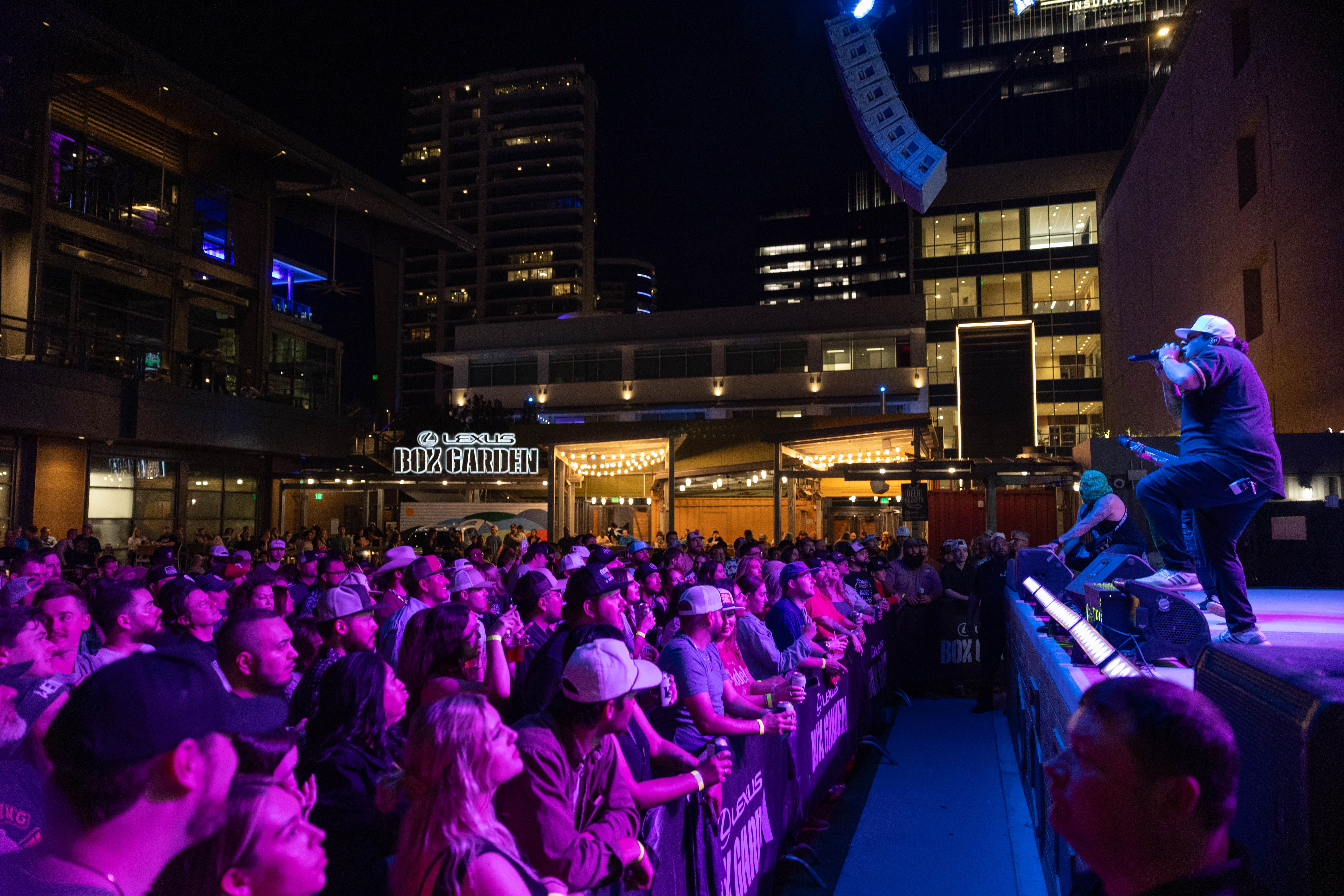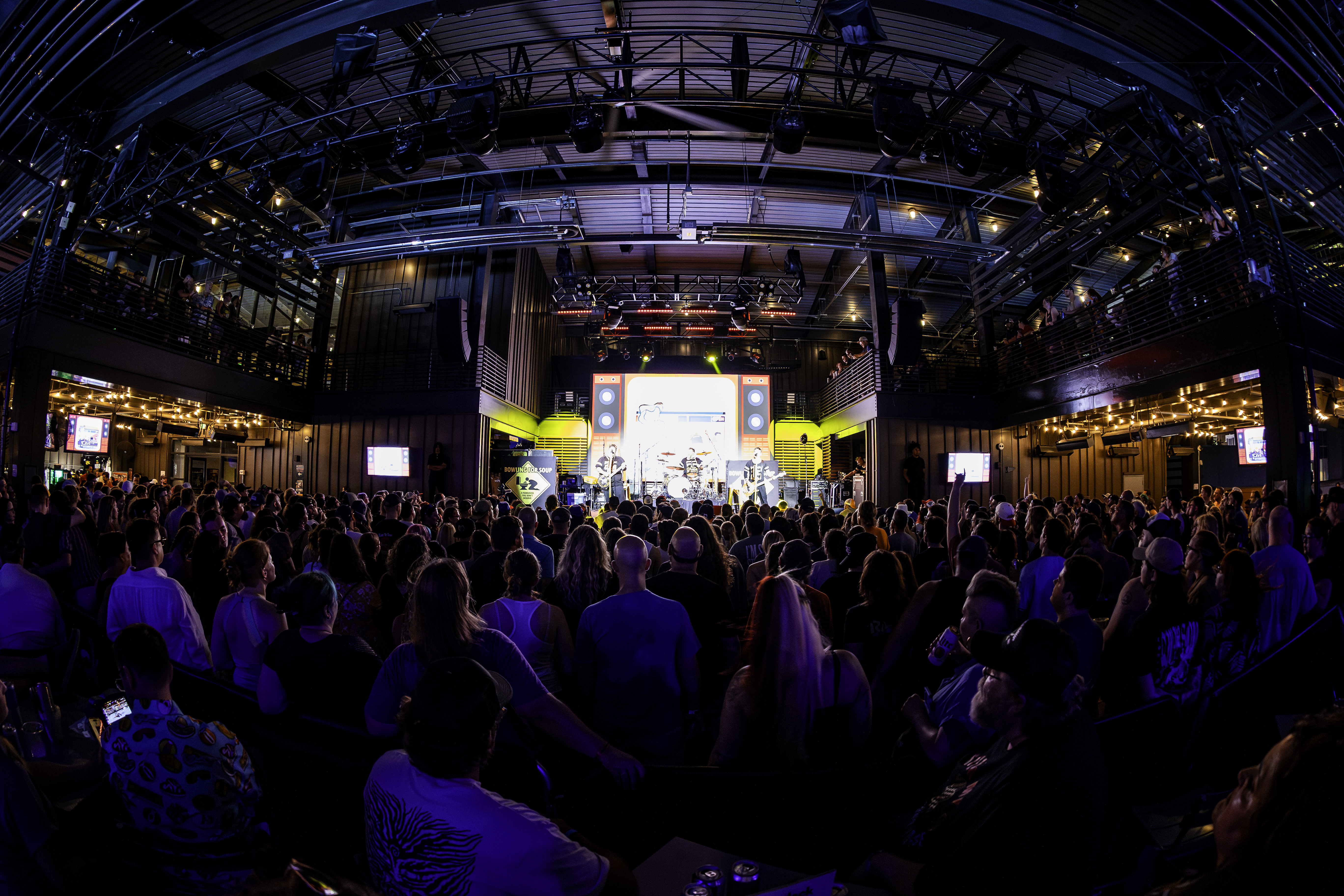Expanding the palate and DNA of immersive culinary journeys

 Interview with Michael Morris
Interview with Michael Morris
CEO of the Food Hall Co.
Please describe your introduction to the hospitality industry.
Michael Morris (MM): I started out of college right into real estate (both development and leasing) and was very fortunate to find a role at a local company based in Baltimore called The Cordish Companies which specializes largely in public/private urban development projects that tend to have a very specific sports entertainment perspective. By my third or fourth year there, I ended up getting onto the development side of the business, most notably the Power and Light District in Kansas City, Missouri, where I took that project from concept through opening between 2003 and 2008. I leased that entire project myself, basically the entire process was kind of a Ph.D. in commercial real estate development.
What initially drew you to hospitality?
MM: Hospitality at its baseline is the idea of taking care of others and bringing people together using food and beverage as the medium. Hospitality and commercial real estate are two of the oldest businesses and environments in the world. The idea of bringing people together and exchanging ideas—having a better connection and understanding of other cultures, personalities, and people—is something that has always been very interesting to me. I can remember, as a young child, my mother was a home cook, and it didn’t matter whether there were two people or ten people showing up for dinner, she made enough for 50 because she never knew who was coming. There was always food on the table and opportunity for conversation.
I [see] an opportunity to continue that in my professional life and provide opportunity for others. It’s just something that’s always been very interesting to me and candidly, hospitality is connecting with people. While, yes, that can be very challenging in a lot of ways, it can also be extremely rewarding. Ultimately, if you’re not waking up in the morning and excited to tackle the day, you probably should find something else to do. So, for me, it’s just an incredible combination of my passion and experience, [creating] environments that allow the customer and our guest to feel as comfortable as if they are in their own home and yet uniquely know they can never recreate that experience anywhere else. By definition, that’s a destination—bringing people together from diverse backgrounds and experiences, placing them in an environment conducive to exchanging conversation and ideas.
When considering the brand experience and design for a new food hall property, what specific elements or touchpoints are most critical in your approach?
MM: When considering the brand experience and design for a new food hall, we prioritize elements that create a sense of immersive discovery connected to the local community. The environment itself is a critical touchpoint that must embody and amplify our brand pillars.
First, we assess if the location has the necessary foot traffic to attract our target adventurous eaters and expose them to new experiences along their normal paths. The physical space constraints like access, height, and layout are evaluated to ensure it can accommodate the high-volume traffic flow of our halls while facilitating an open, theatrical dining atmosphere.
Authenticity and storytelling through the space’s materiality and design are vital. We aim to create environments with a tangible, historic connection to the surrounding architecture and community. This could mean adaptive reuse of an existing asset with character or for new construction, using materials, sightlines, and architectural cues that integrate the space into its context.
How has your approach to the brand experience and design of food hall properties changed over time?
MM: Our approach to crafting an immersive and community-driven brand experience at our food halls has become increasingly focused on creating environments with an authentic, timeless quality.
Early on, there was perhaps more emphasis on following design trends or using materials that were aesthetically popular at the moment. However, we’ve evolved to prioritize design choices that tell a deeper narrative and forge a tangible connection to the local community’s culture and history. We concentrate on textures, dimensions, lighting, and sounds that contribute multi-sensory depth. Adaptive reuse of existing spaces with inherent character and storytelling power has become preferable when possible. For new construction, the materiality and architectural elements are purposefully chosen to integrate the space into its surrounding context.

Investing in quality design execution upfront pays off through the timeless, “evergreen” nature of the ambience and ability to consistently deliver on our brand pillars of immersion, discovery, community, and hospitality excellence. While being mindful of budgets, we’ve learned it’s better to thoughtfully bring a space to life than chase trends disconnected from our brand’s roots.
Ultimately, our entire experience ecosystem — from the physical space and design to the food/drink offerings, programming, marketing and customer touchpoints — must cohesively work together to transport guests into our unique world. Maintaining this holistic, strategic brand experience focus allows us to continually evolve our approach while staying true to our community-centric ethos.
How have the expectations of your patrons changed, and what role does brand strategy play in answering these changing expectations?
MM: Consumer expectations are constantly shifting, which makes having a clearly defined brand strategy and “DNA” (Differentiation, Nuances, and Attitude) essential for staying attuned to our core patrons. We’ve noticed a broad pendulum swing away from overly lavish, novel dining experiences toward a desire for quality food and overall value.
Our brand pillar of culinary “excellence” from passionate makers aligns well with this interest in authenticity over gimmicks. However, patrons still crave a sense of discovery and immersion beyond just transactional eating. This is where our brand focus on creating engaging, communal “food theater” environments provides differentiation.
The inherent variety and customization possible at our food halls caters perfectly to the expectation for personalized value. Whether grabbing a quick, affordable bite or making an extended experience out of leisurely exploring diverse offerings with friends, our model accommodates different dining needs and budgets.
How does brand strategy influence your bottom line in terms of ROI?
MM: Having a strong brand strategy is crucial for filling seats and keeping customers coming back — the key to any successful restaurant business. As they say, the most expensive thing is an empty seat.
Our brand promise to create exciting culinary discoveries and foster a community atmosphere act as the foundation for attracting new customers initially. However, truly maximizing profits hinges on using those brand pillars to turn first-time visitors into loyal, regular guests.
Statistics show the chances of a diner returning just a second time are only around 30%. But if they do come back that third time, the chances of them becoming a habitual customer double. This shows how important it is to deliver an amazing full brand experience from the start to build real relationships.
Our unique brand DNA focuses on excellence, engagement, delivering gratification, and touchpoints like our Hall Guides provide the crucial elements for making dining more than just a transaction. When experiences tap into all the senses and strike an emotional chord, that is when you cultivate true customer devotion.
From the visual design of our spaces to shareable “food theater” moments, each brand element works together to leave lasting positive impressions. This intangible brand equity directly leads to bottom-line impact through increased spending, frequent visits, and word-of-mouth from delighted guests.
By keeping our unique brand vision as the guiding force across all customer interactions, we create compelling reasons, “our why” for people to linger and return versus just another forgettable meal. This cycle of brand loyalty feeding revenue growth is pivotal for long-term profitability.
What do you see as the next frontier within the hospitality landscape, and how can an integrated brand strategy respond to this evolution?
MM: The next frontier in hospitality will push beyond just providing food and drink into multi-dimensional realms of immersive experience and communal connection. This aligns perfectly with Food Hall Co.’s brand ethos and core values around creating a “food theater” atmosphere that fosters community engagement.
Our core value of “Every Moment Matters,” the passion for food and entertainment will be crucial as we extend into blending hospitality with elements like art, education, workplace activations, and more. Each new concept must radiate our brand DNA of celebrating artisans and inciting curiosity through discovery-driven environments.
With our guiding brand strategy and core values as the foundation, we can fearlessly extend into new frontiers versus chasing disparate trends. Our compelling vision centered on fostering human connections through engaged discoveries allows limitless innovation. Ultimately, our brand’s future lies in its ability to constantly redefine the boundaries of hospitality while fostering profound human connections.



